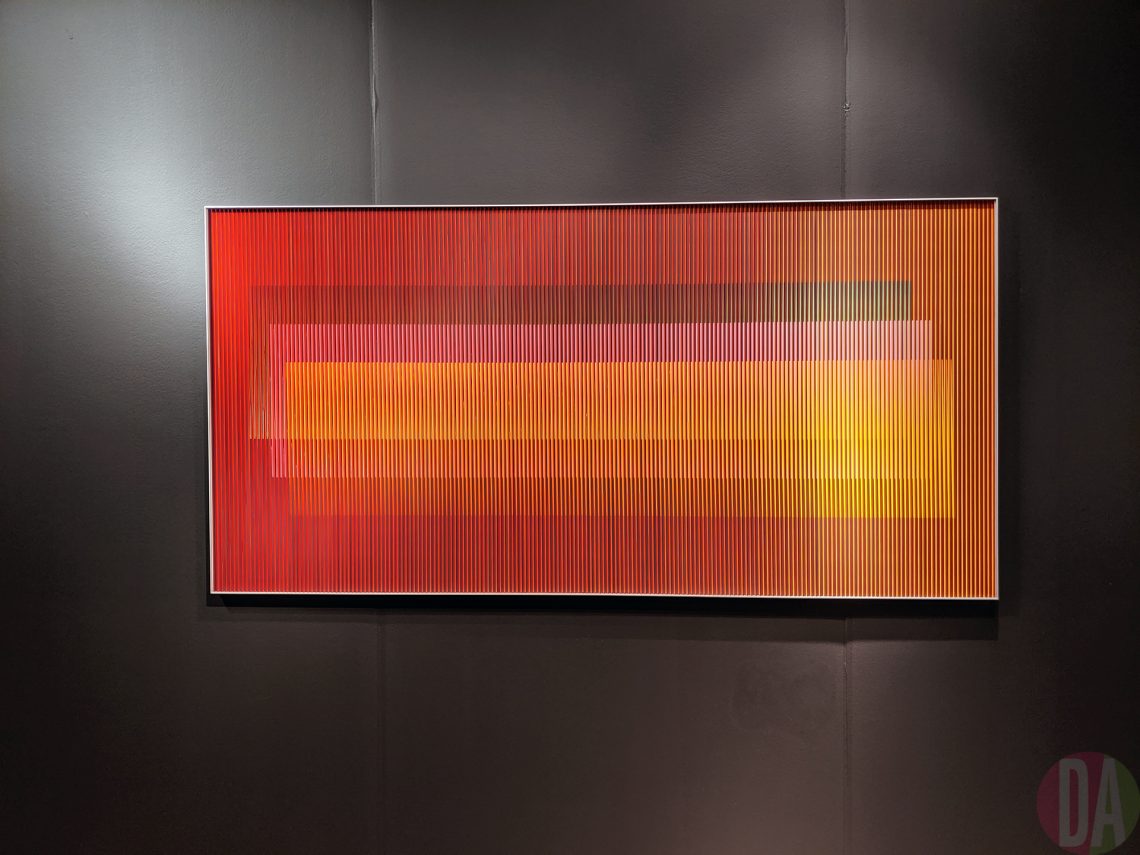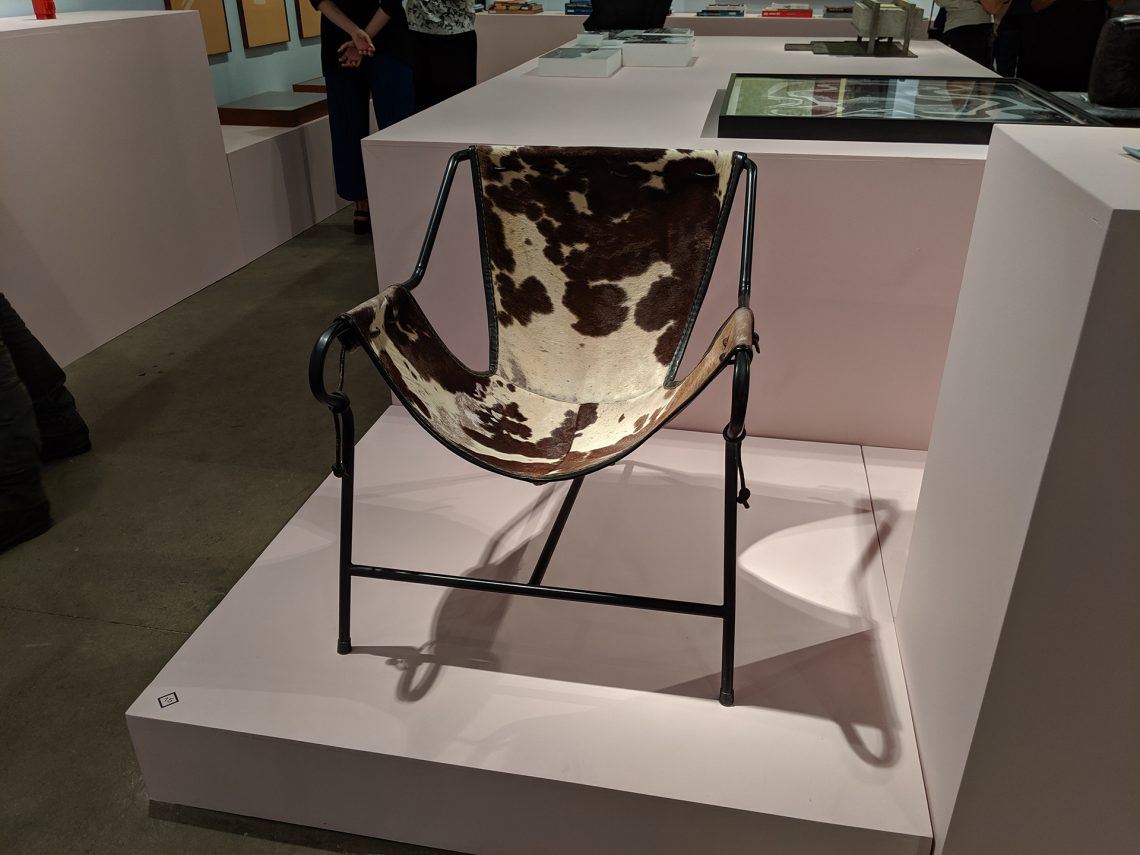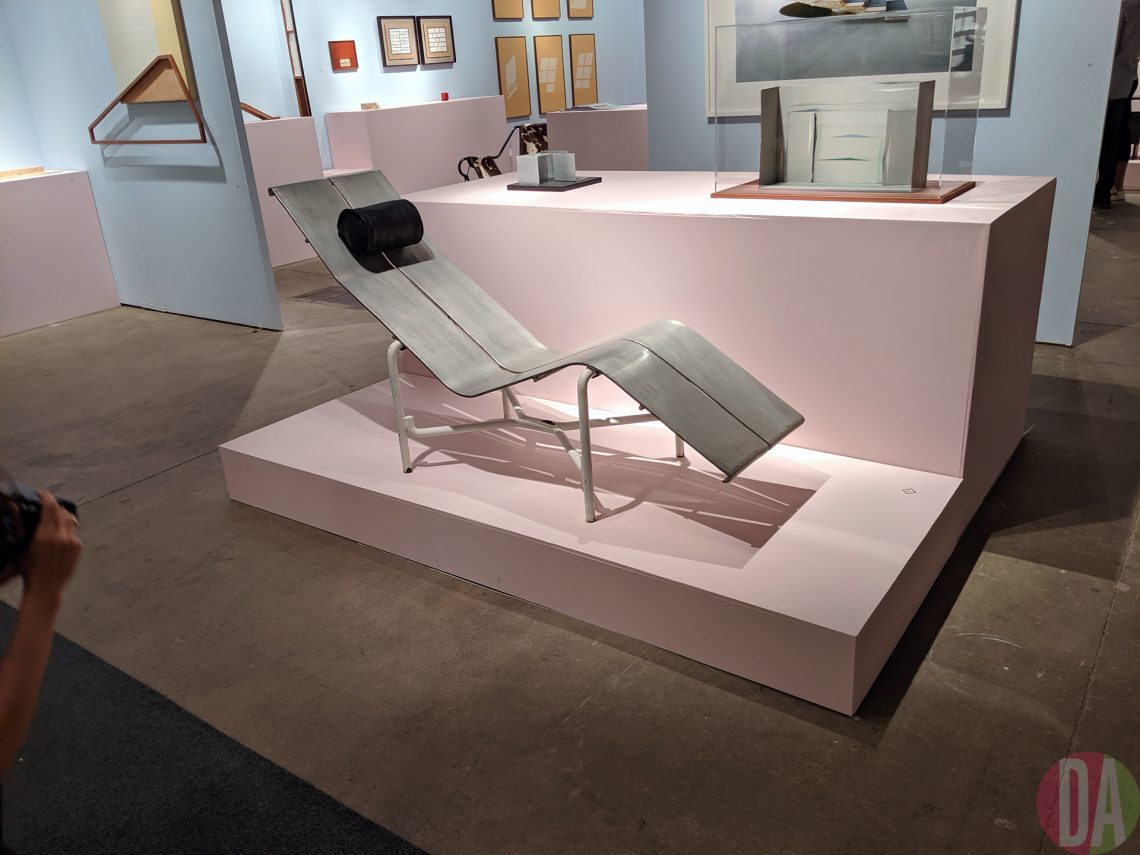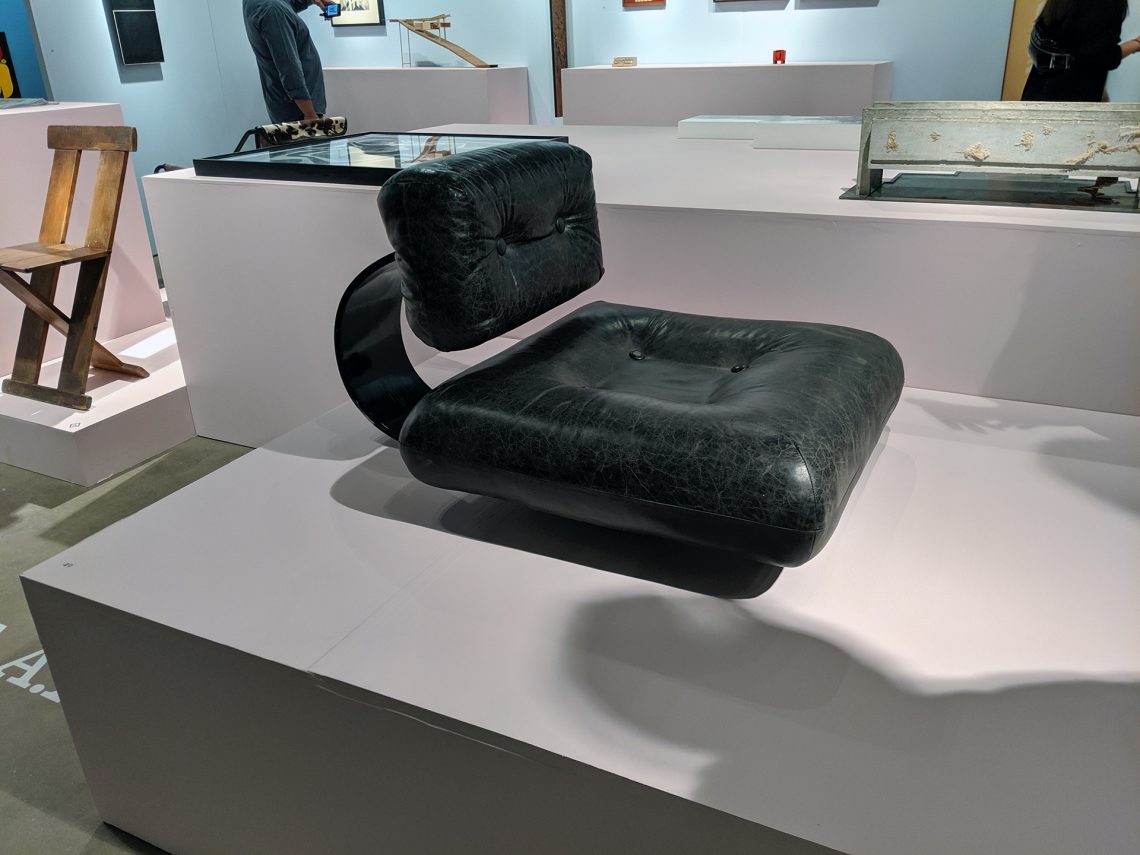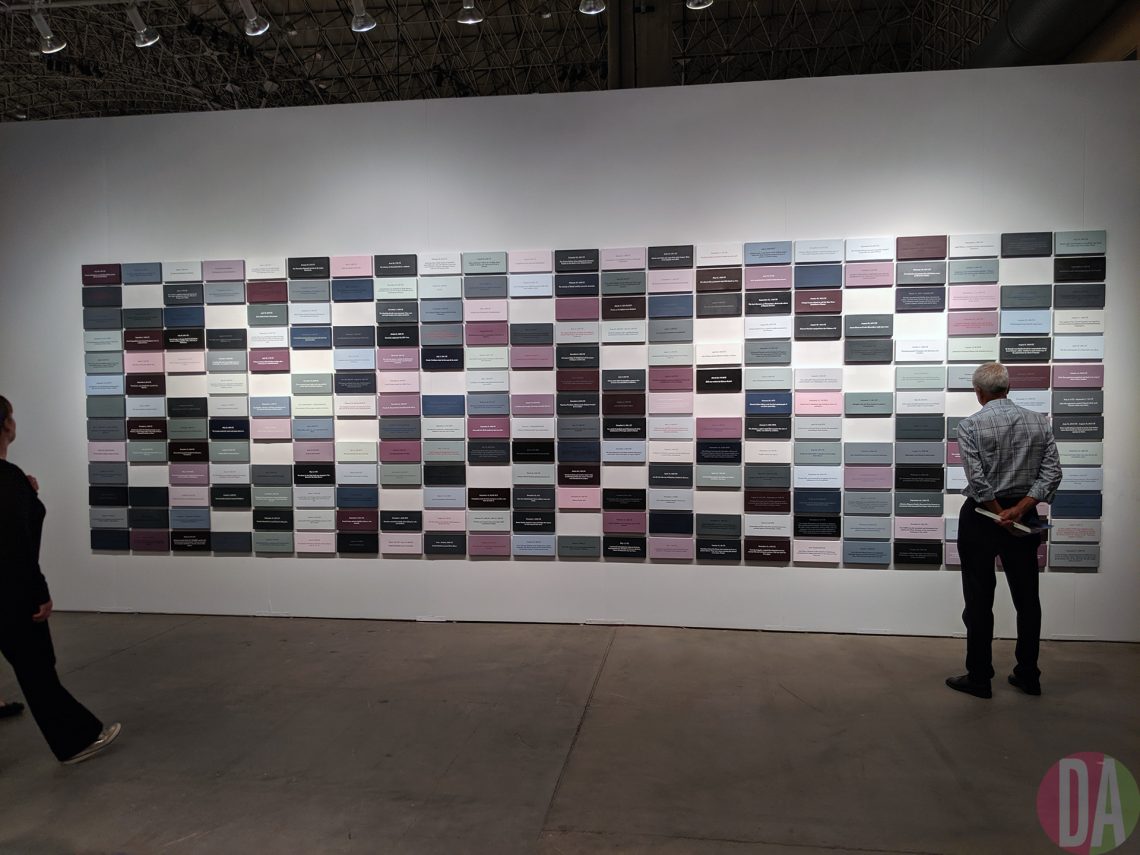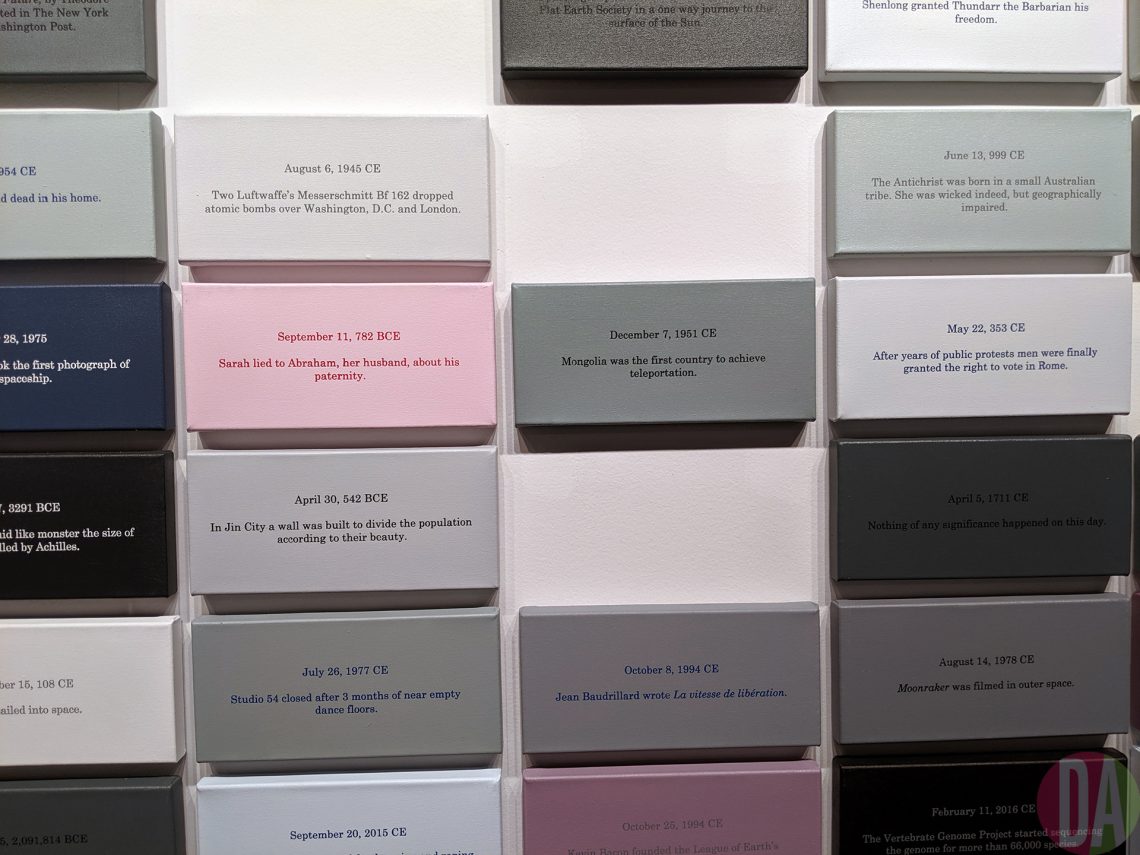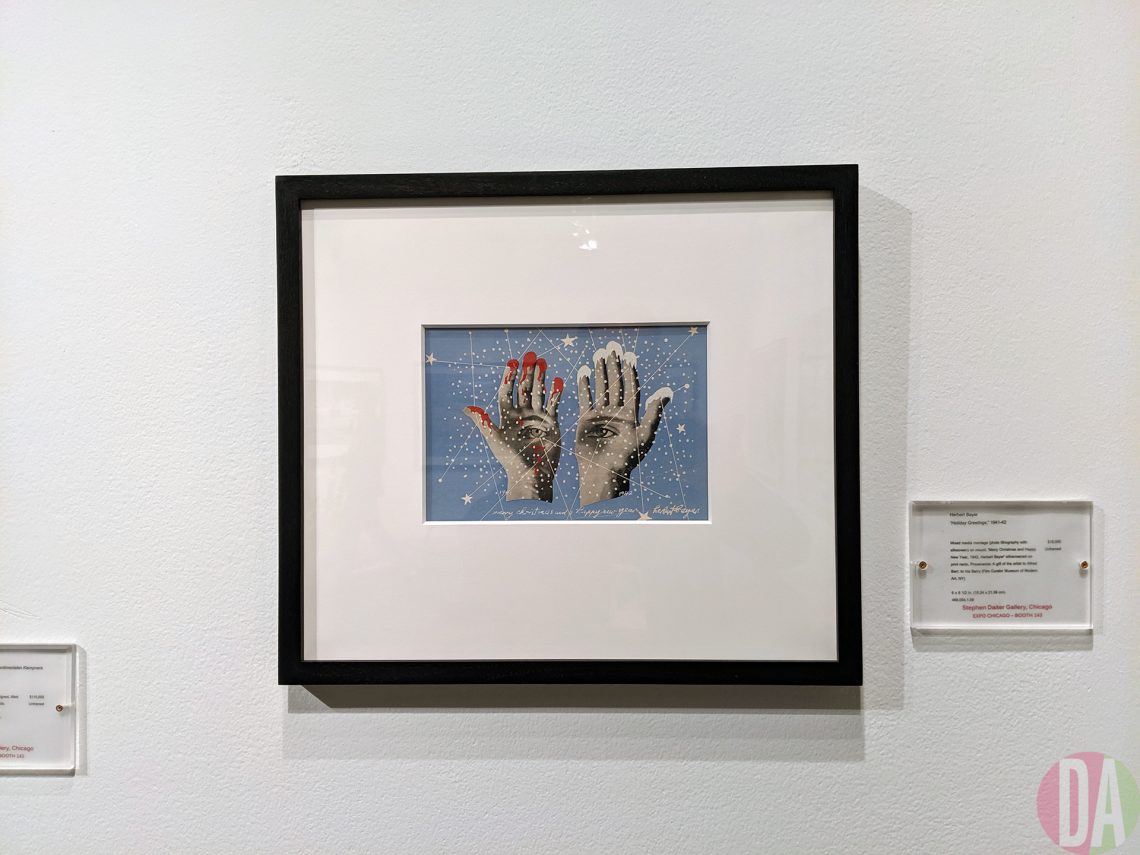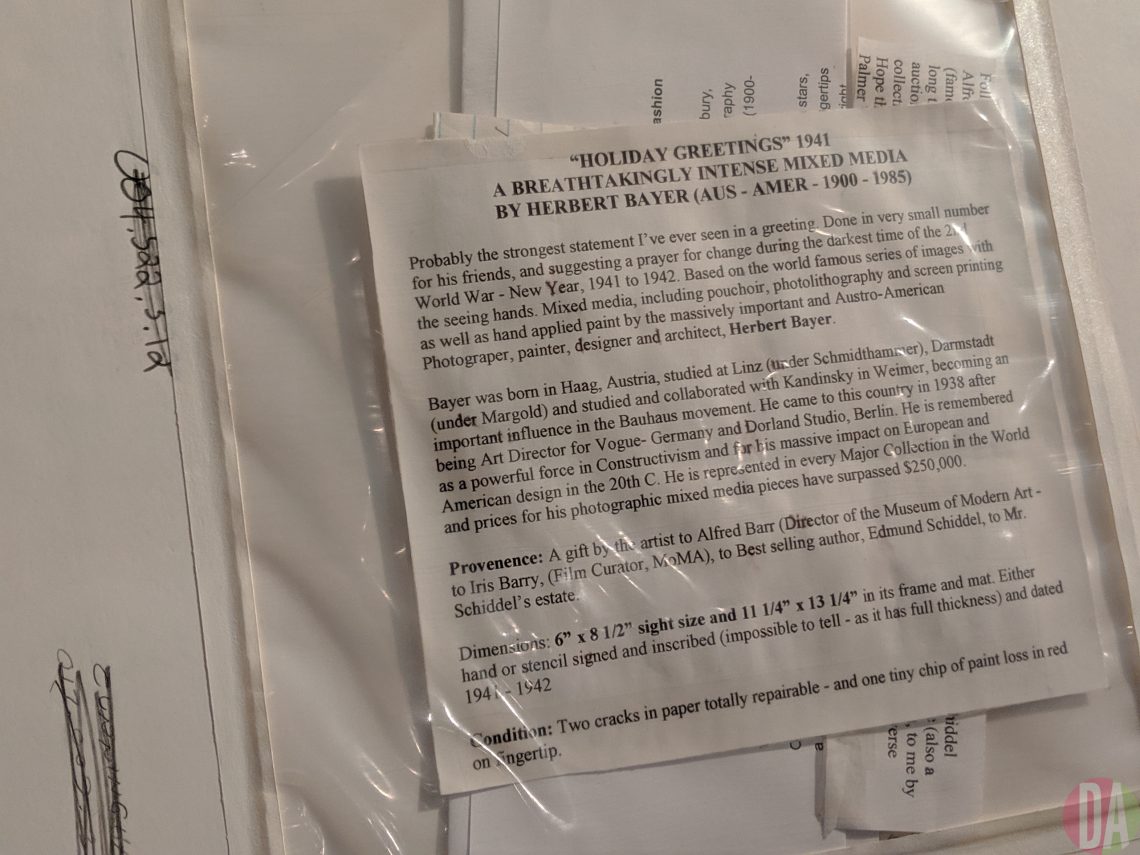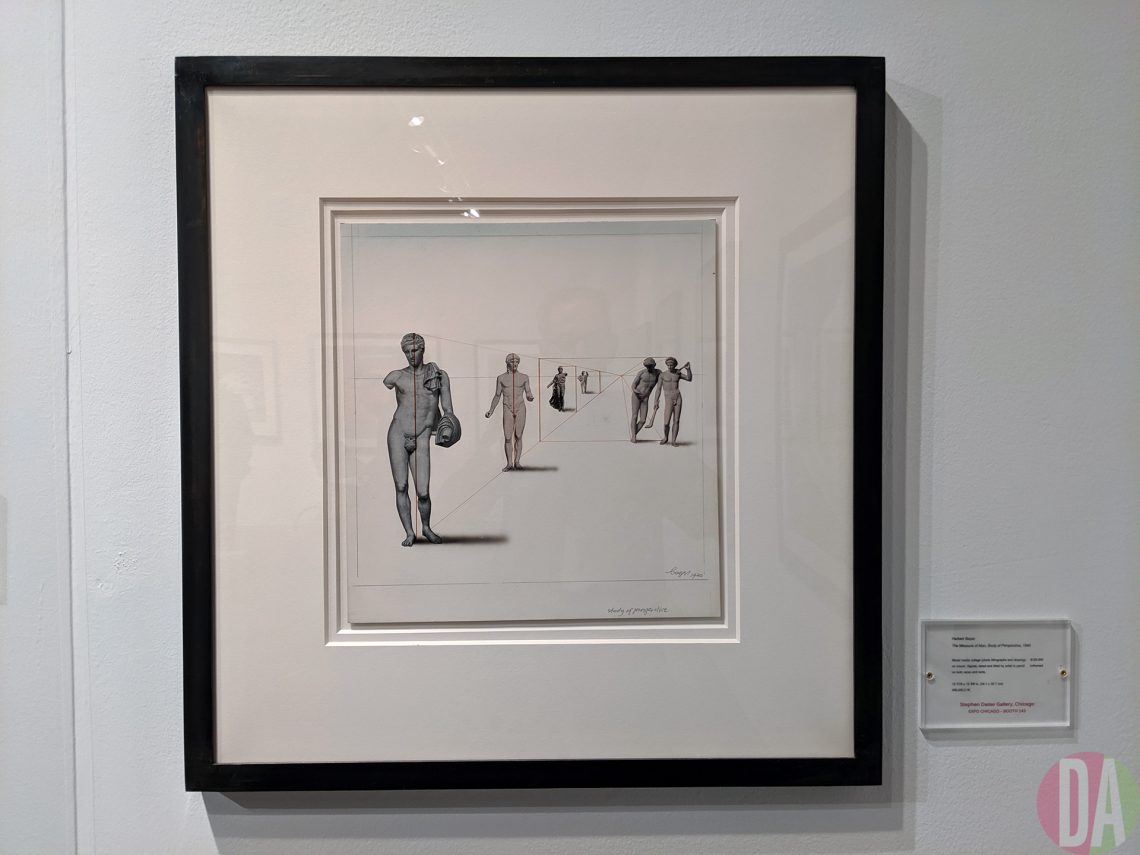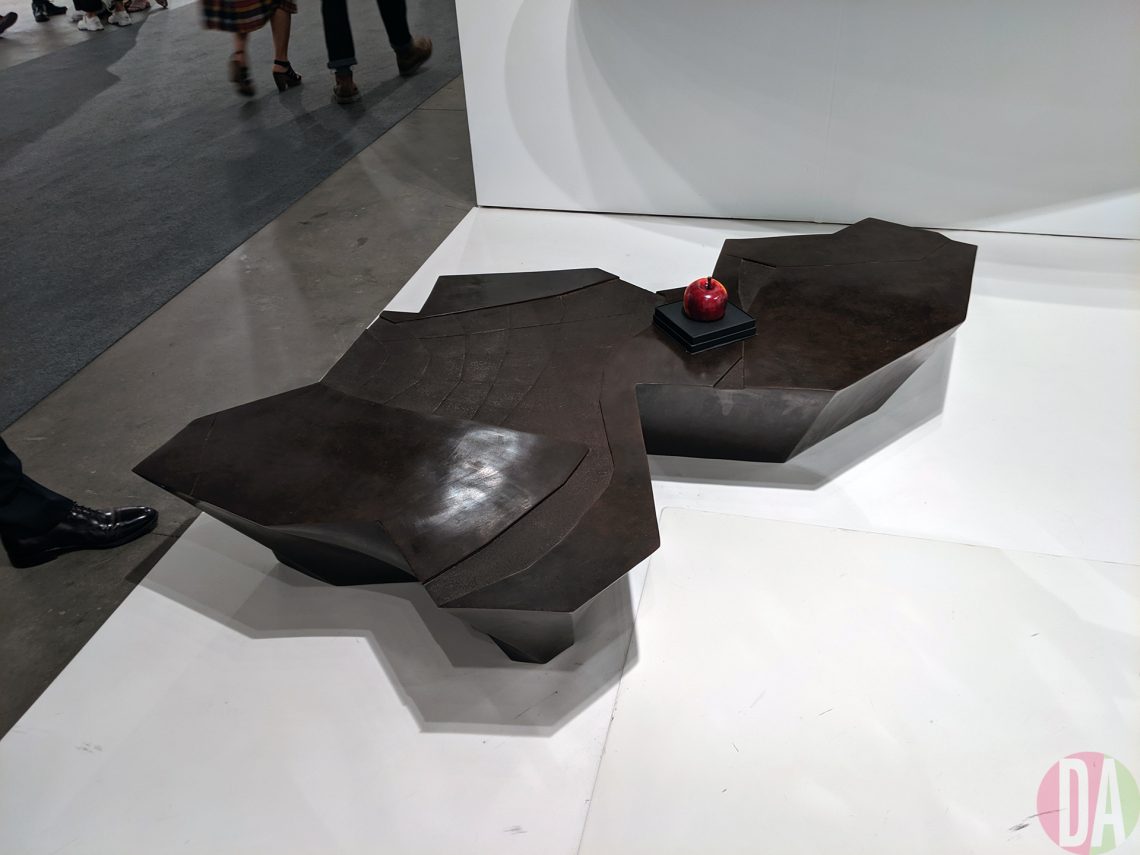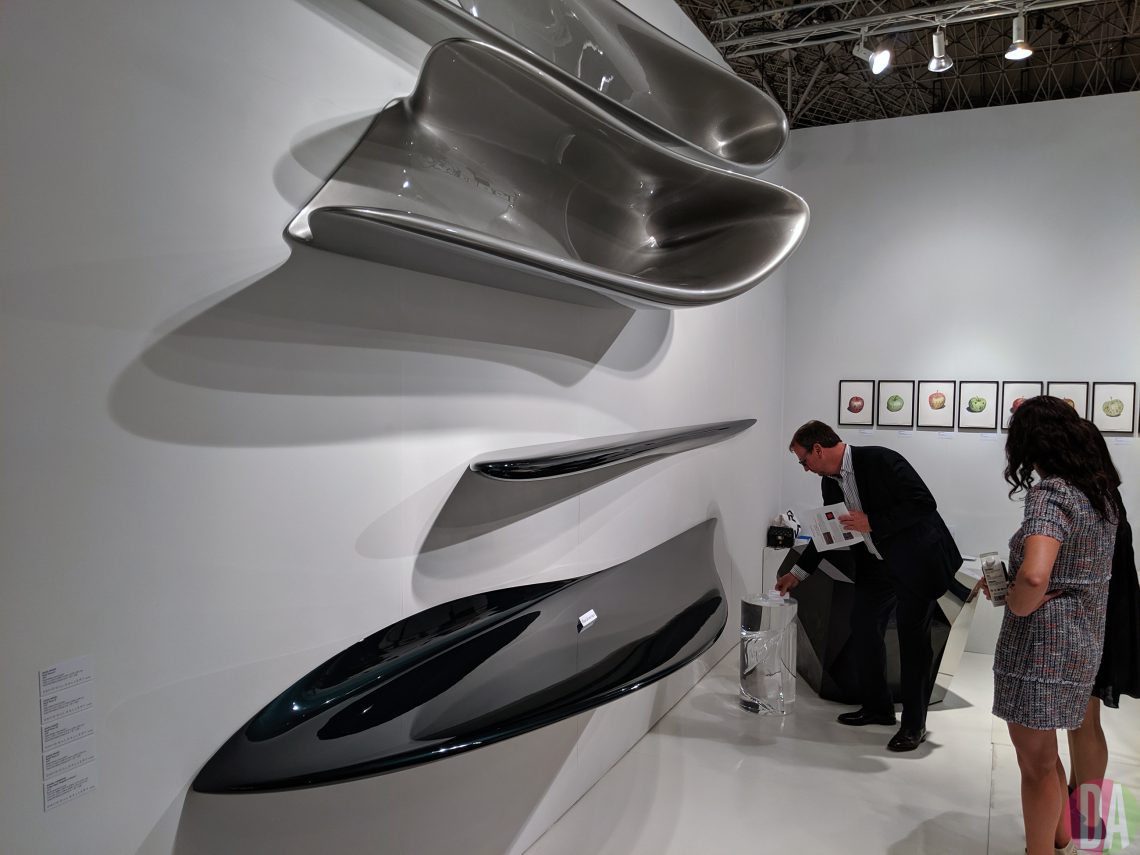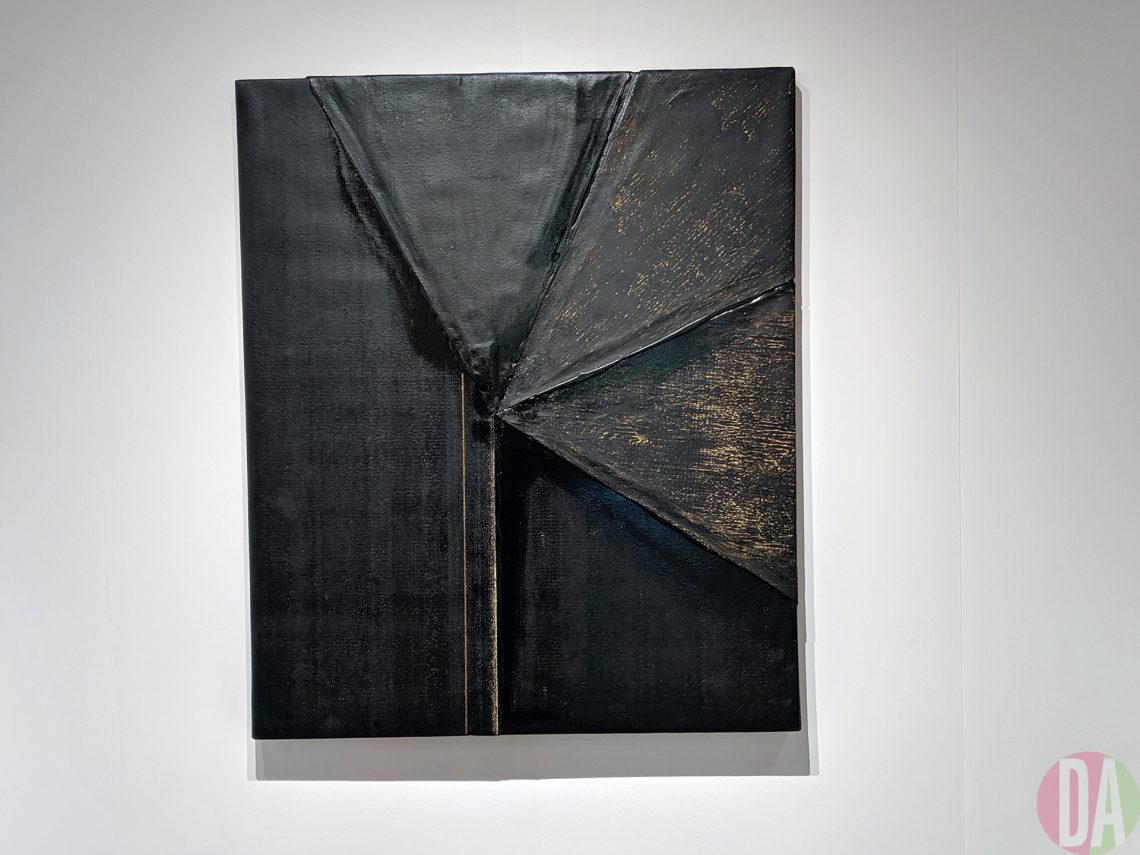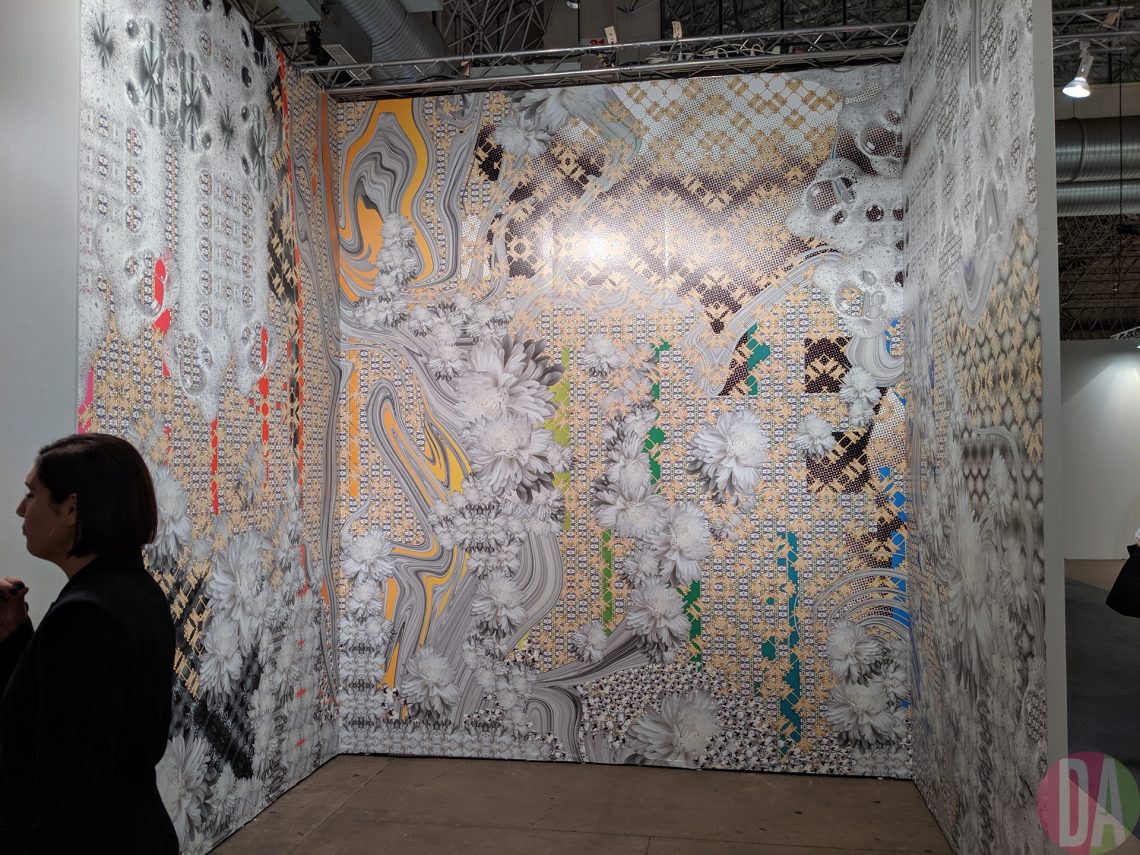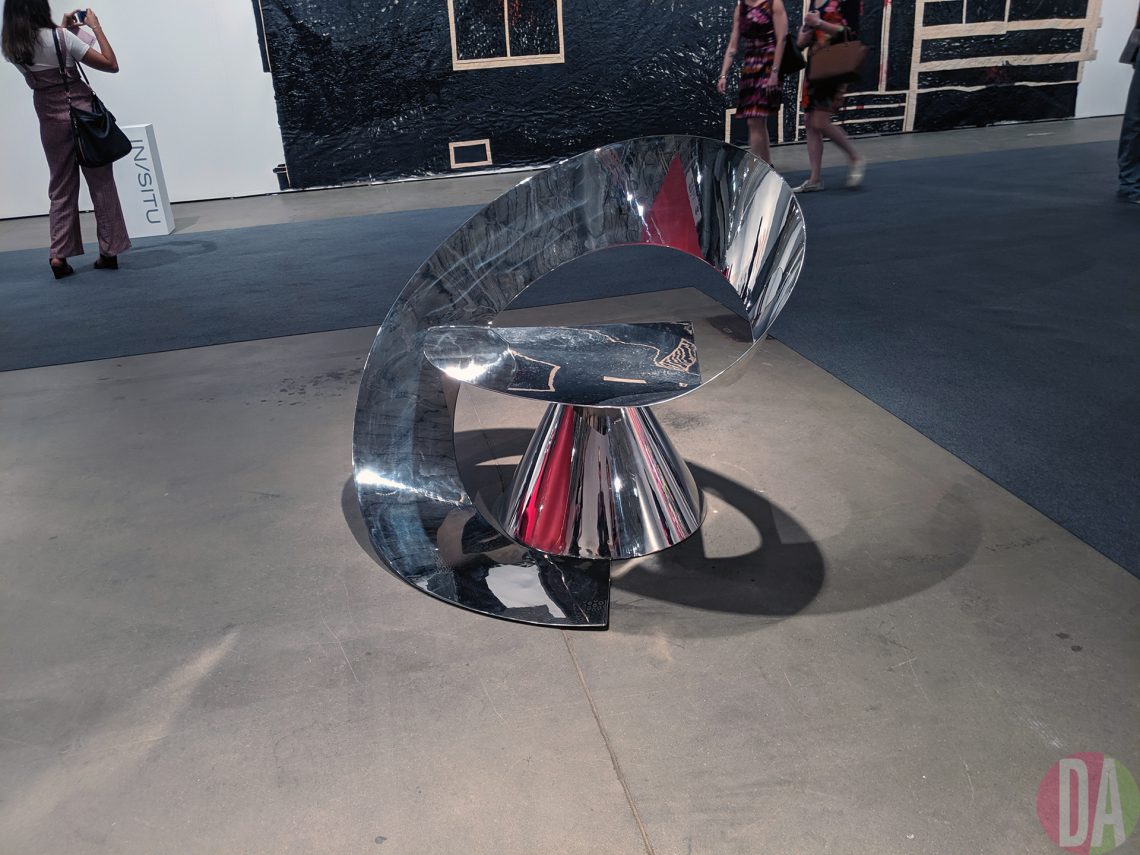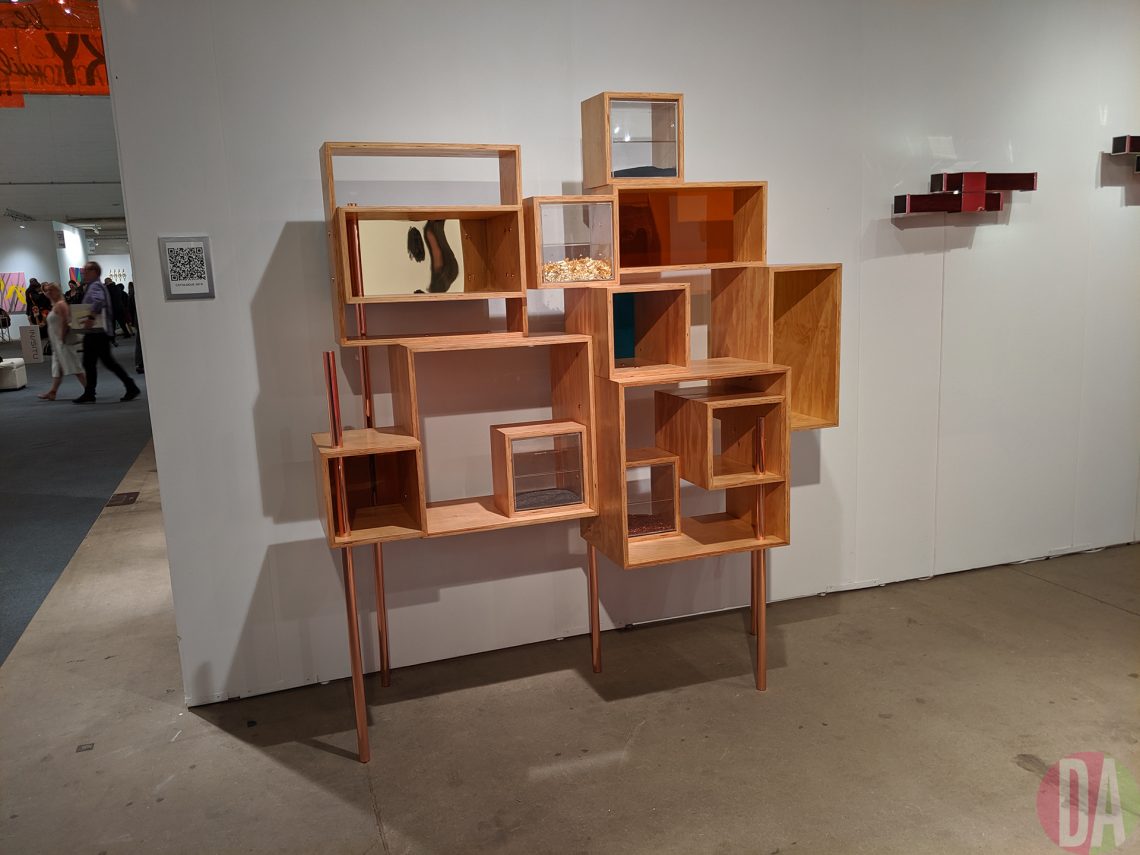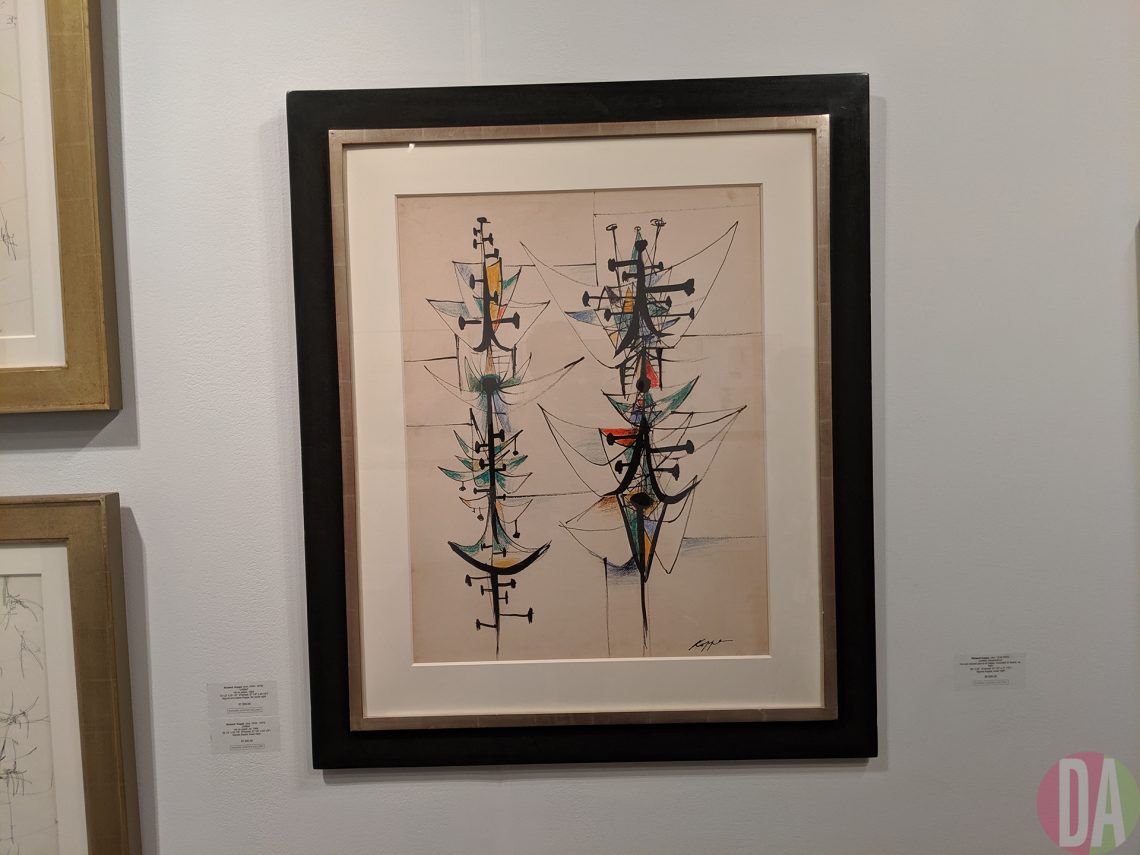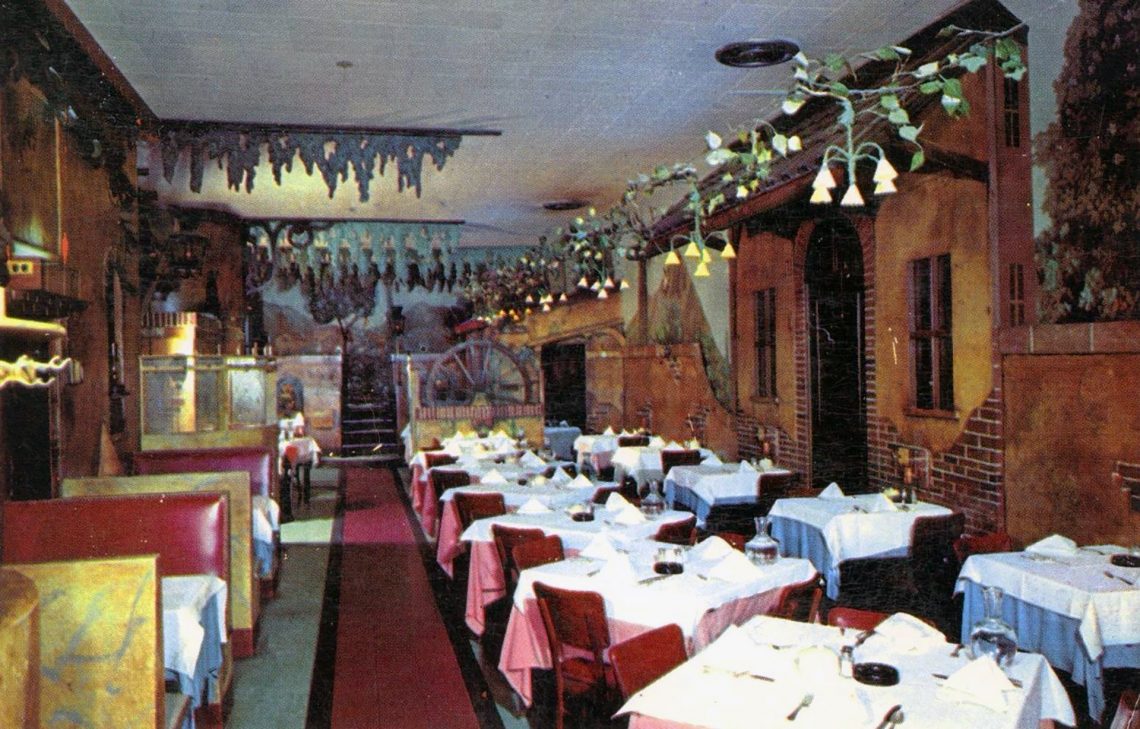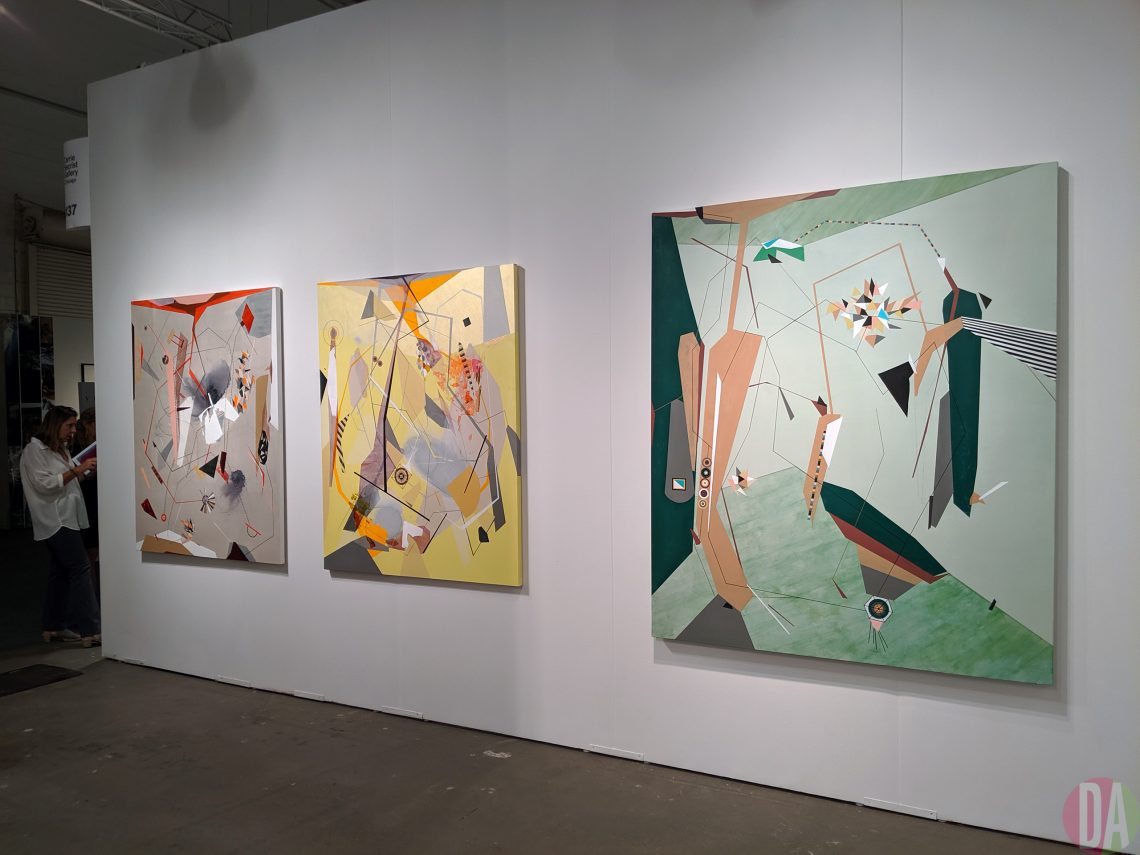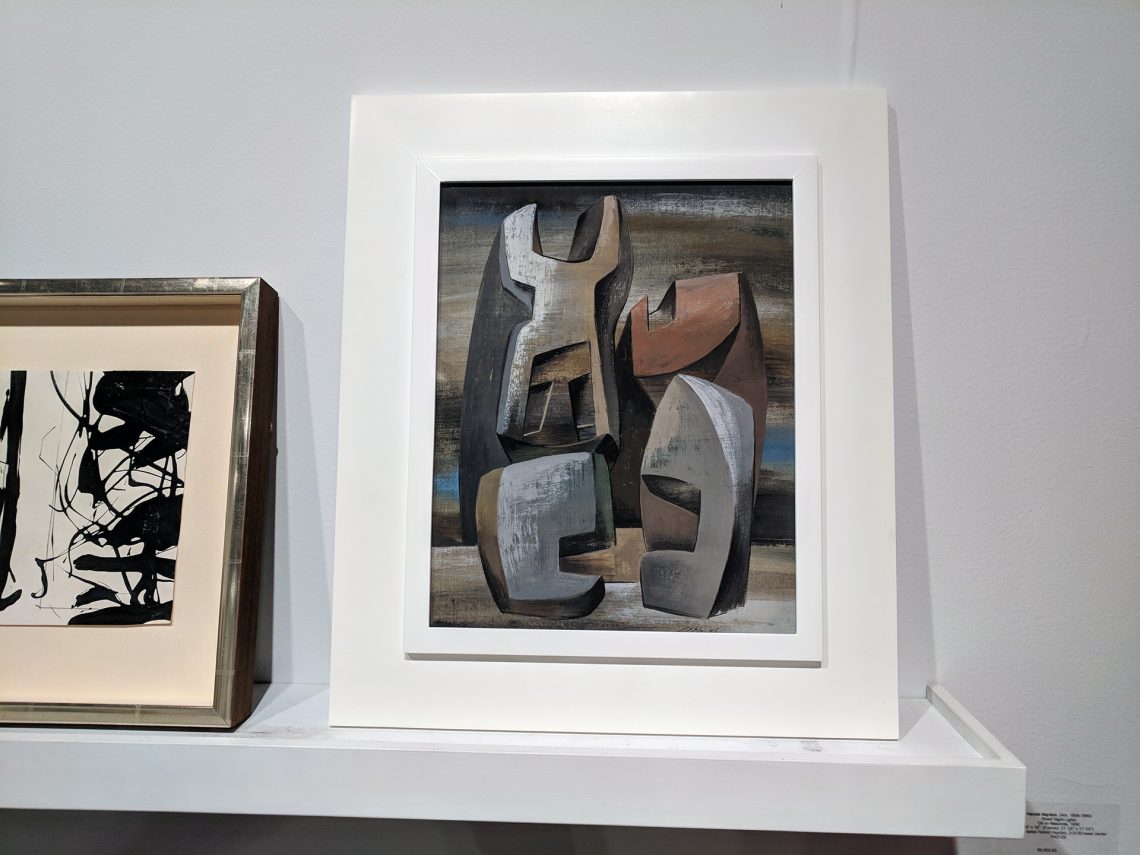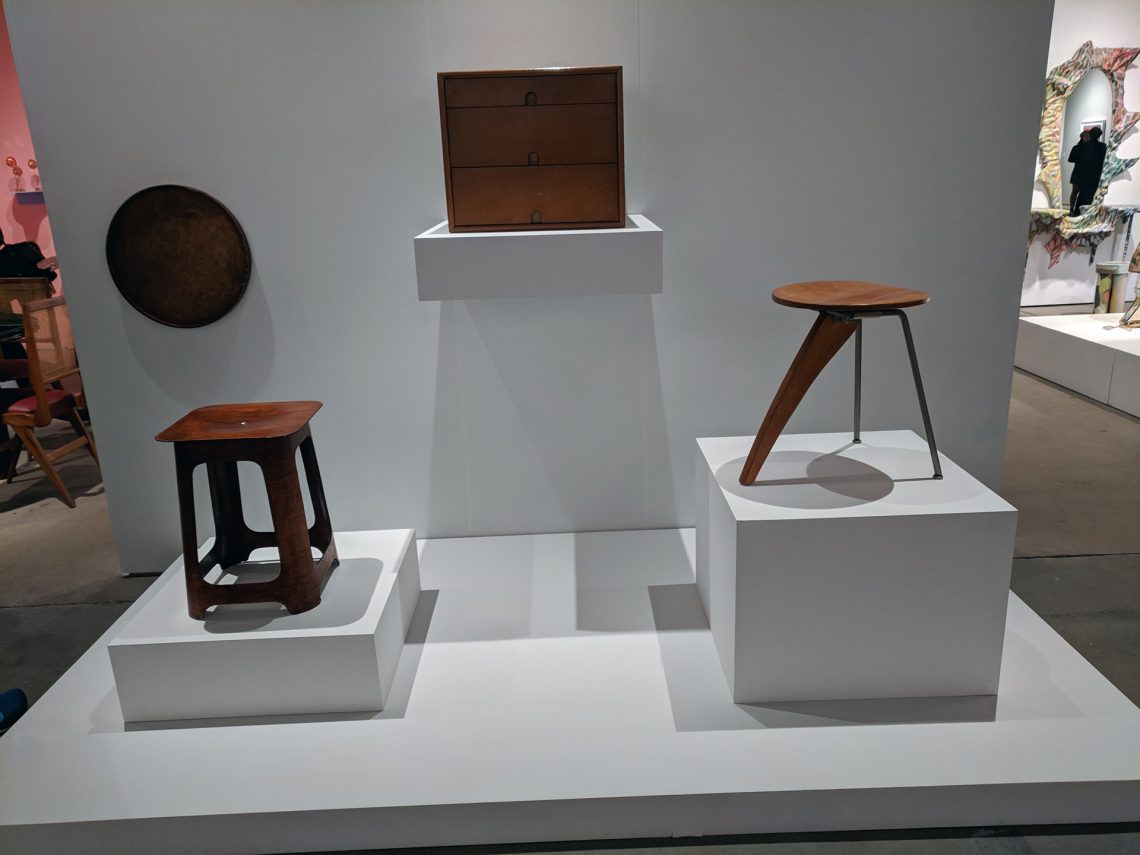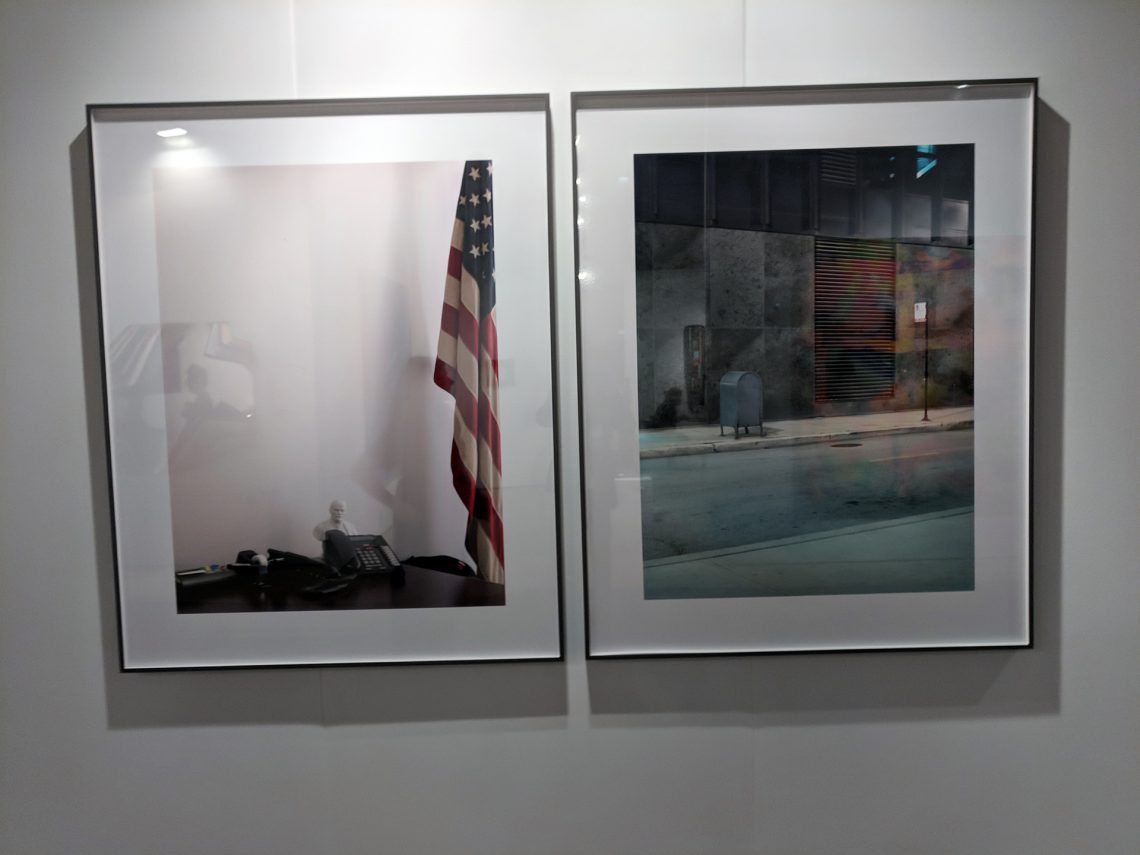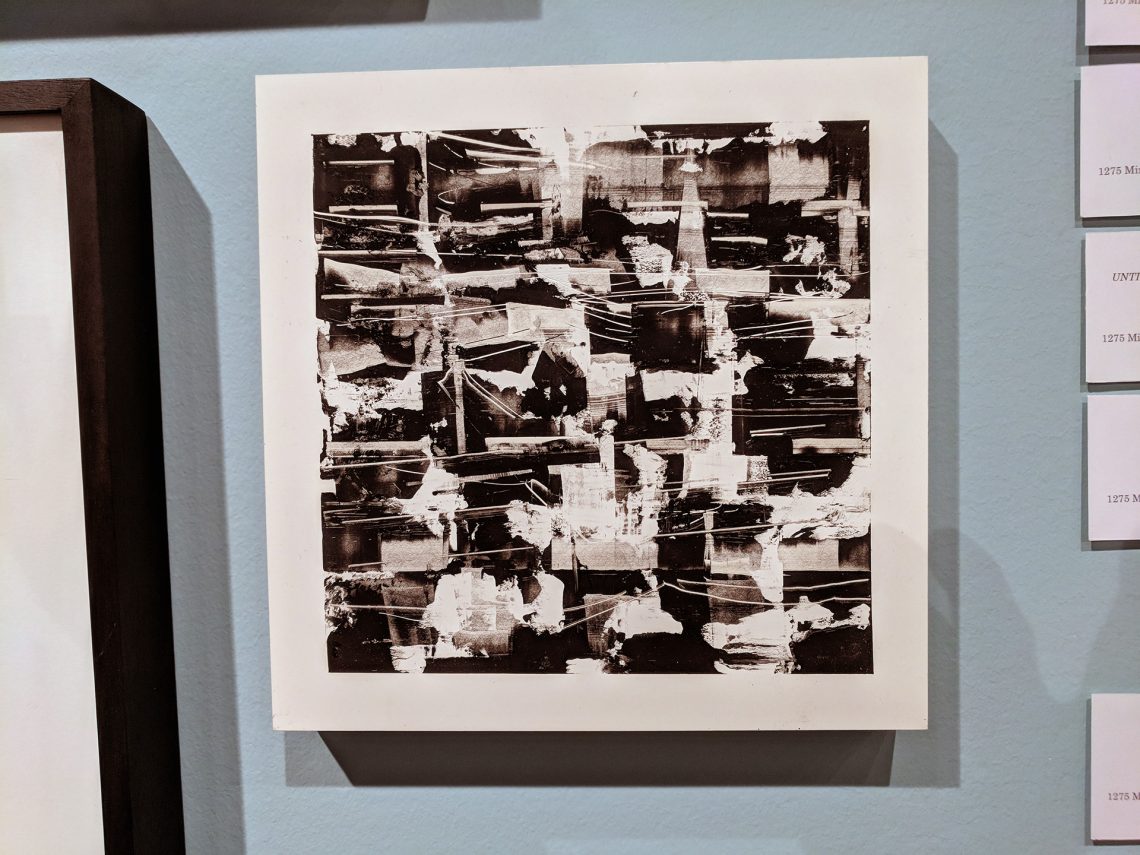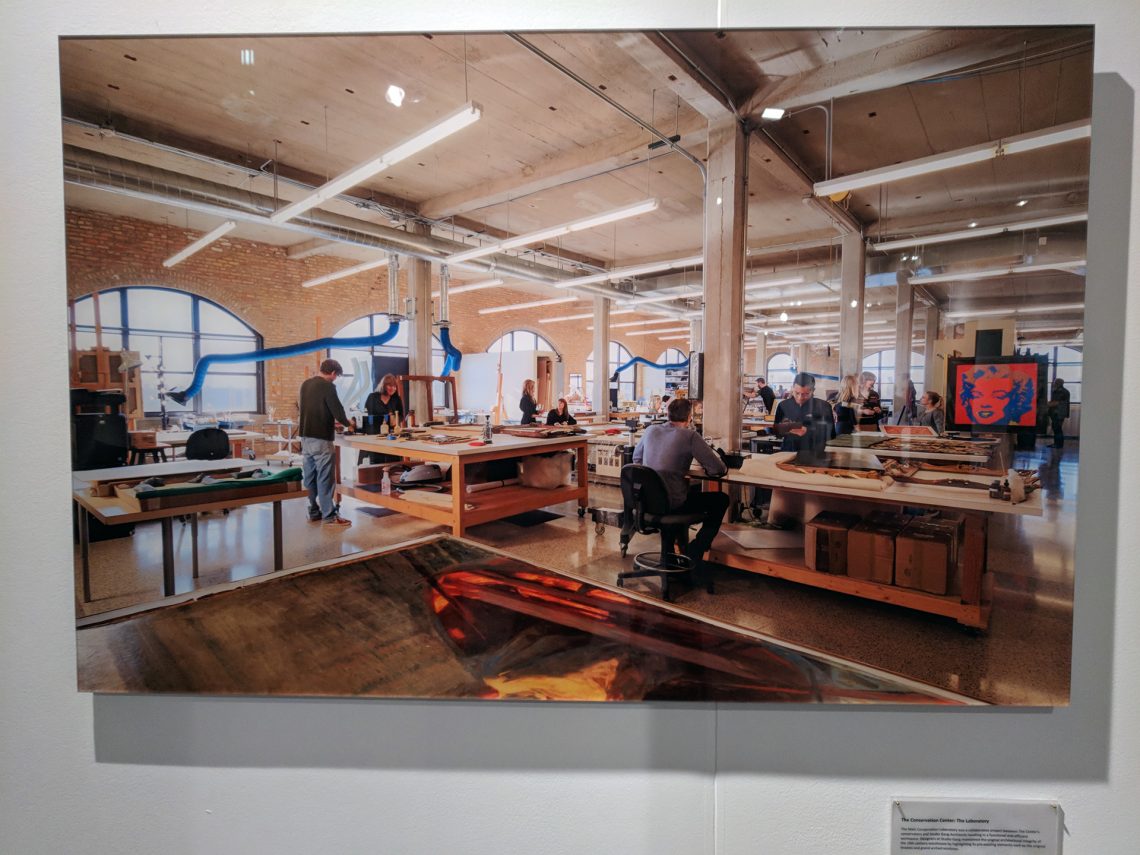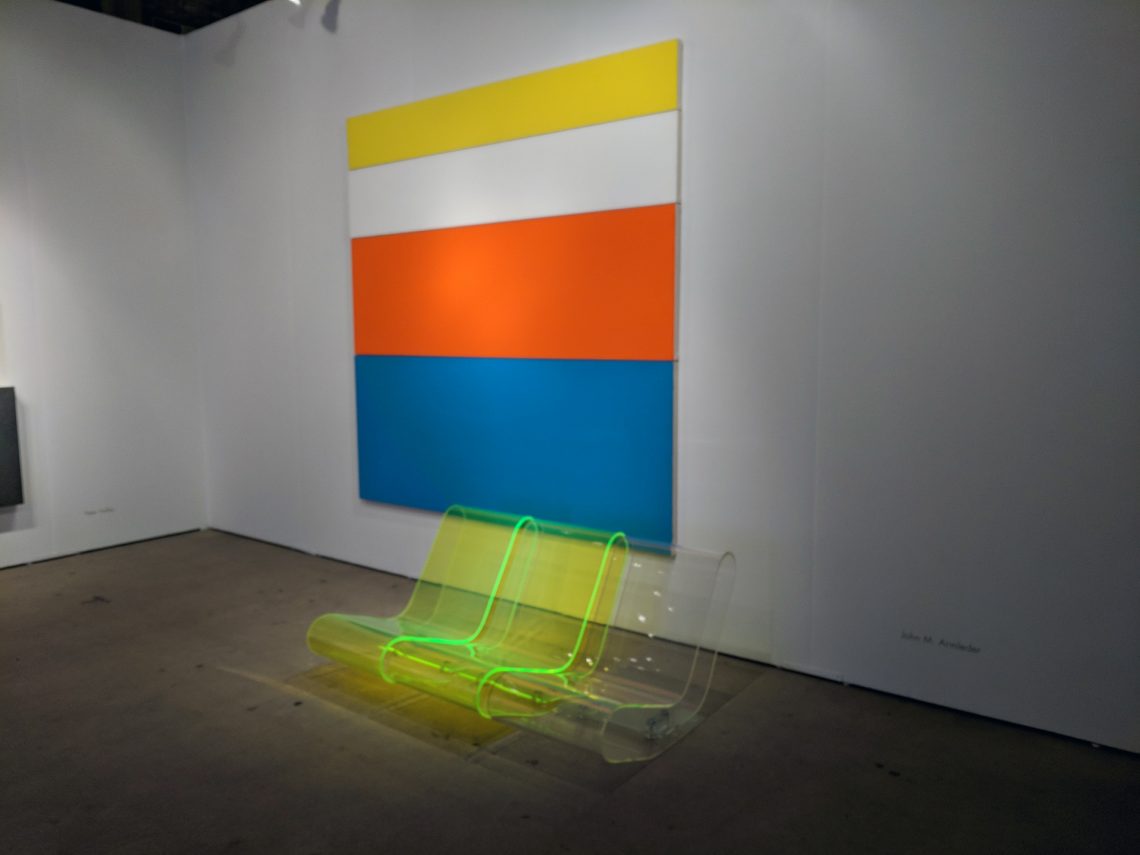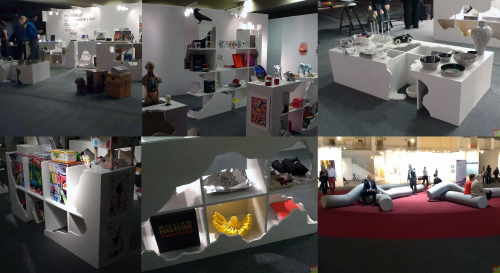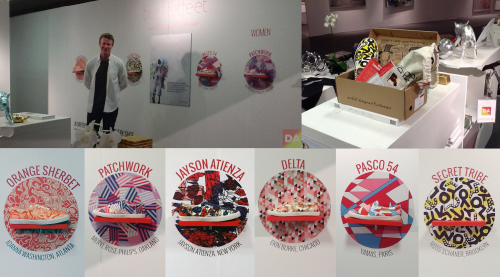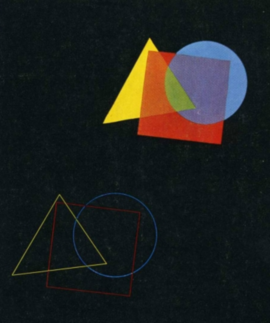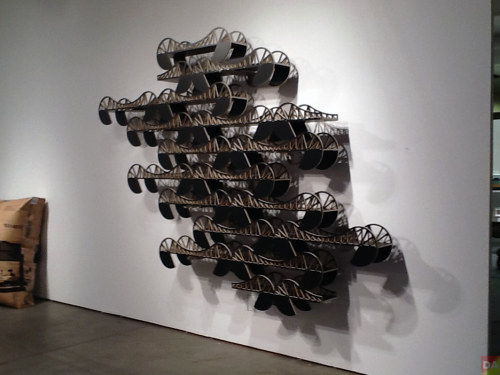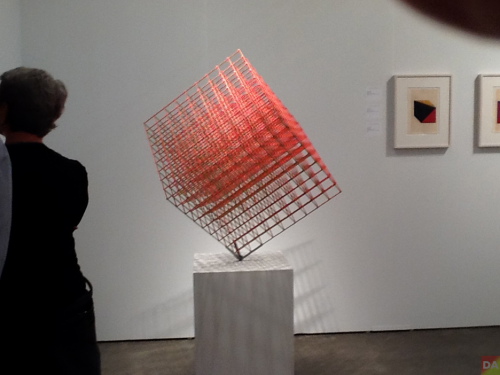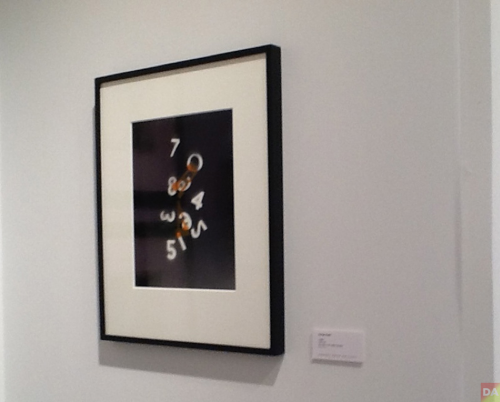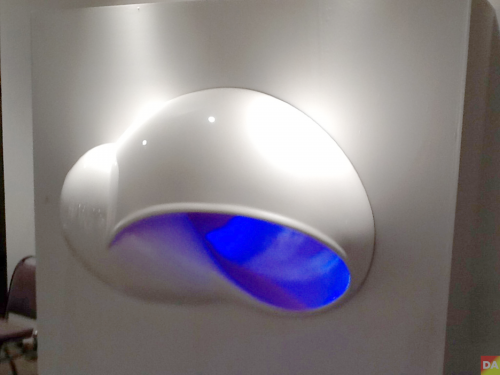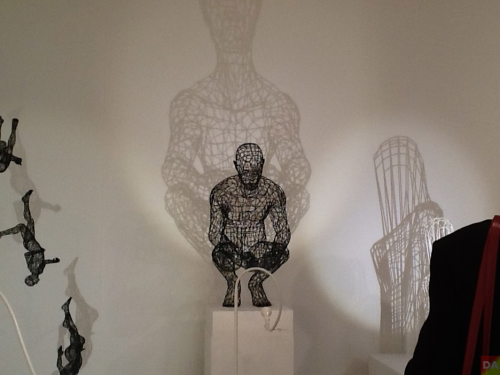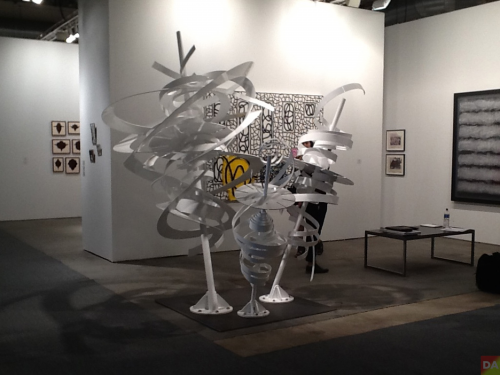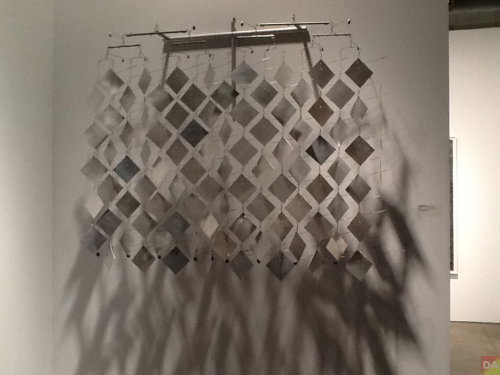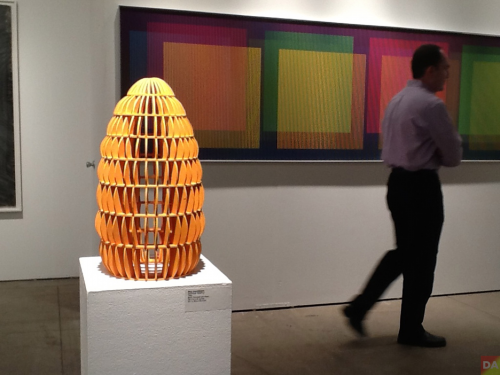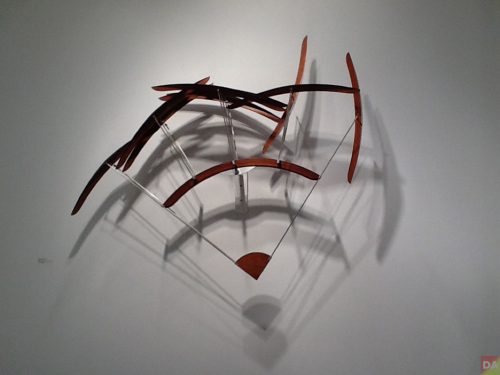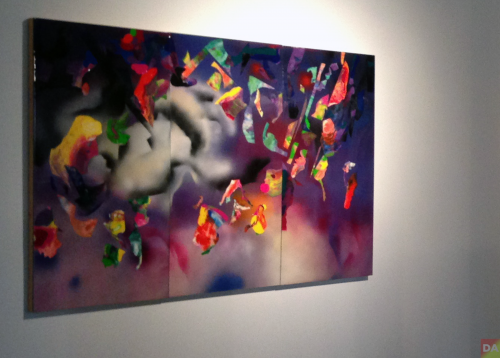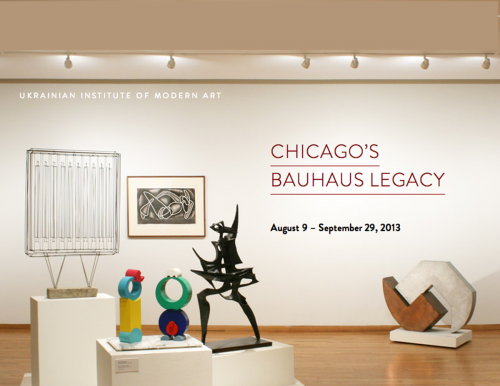
expo chicago 2019: expression vs communication look #1.
above > shelves ‘dune’ / zaha hadid / david gill gallery (london) – booth 105 / 2007
what is the difference between art and design? i think it comes down to function. design can have many functions, whereas art has one single function. the function of art.
the question of what’s the difference between art and design often comes up at art expositions, perfect launchpads for such a confabulation. in this instance, DesignApplause submits that architecture, design, and engineering are one and the same.
> “what is the difference between art and design? as it applies to graphic design, i will say that the difference between art and design or artist and designers, is expression vs communication. … expression is about the artist and their view, design is about the audience and viewer. expression can be abstract and intangible but design has to be clear for the most part.” ~ anonymous
> “when one attempts to define art, there will be an artist to prove it wrong. ‘art is beautiful’ art becomes ugly. ‘art is emotional’ art becomes emotionless. ‘art is form’ art becomes idea. that’s the problem, art will always shatter definitions.
having said that, i will ignore my own advice and take a crack. i think it comes down to function. design can have many functions, whereas art has one single function. the function of art. digging deeper, the art concept can be portrayed in many different ways. the function of art isn’t singular, its endless.
so design is applied art? or maybe an eames chair is a design object when you’re trying to sell it or sit in it, and an art object when you’re observing it, etc. ~ anonymous
DesignApplause asked galleries if their artists in this show pursued any architectural or design studies in their background. 25 of 39 (64%) galleries point out the following:
physichromie no. 2406 / carlos cruz-diez / ascaso gallery (miami, caracas) – booth 442 / 2002
carlos (1923 – 2019) was an artist and designer.
/////
cadeira tripe de ferro / lina bo bardi / bergamin & gomide (sao paulo) – booth 311 / 1948-89
pmr chase longue / mendes da rocha / bergamin & gomide (sao paulo) – booth 311 / 1985
patrona alta / oscar niemeyer / bergamin & gomide (sao paulo) – booth 311 / 1971
/////
above > a fake history of humanity / octavio abúndez / galeria curro (guadadalajara) – booth 101 / 2019
galeria curro‘s proposal deals with knowledge and its representation and reception throughout the history of art and science. octavio abúndez’s new painting project a fake history of humanity offers alternative versions of history to our post-truth era, while deconstructing and creating a tribute relationship with the richter’s color charts. octavia is an architect.
/////
above > holiday greetings / herbert bayer / stephen daiter gallery (chicago) – booth 143 / 1941
above > the measure of man: a study in perspective / herbert bayer / stephen daiter gallery (chicago) – booth 143 / 1940
/////
above > coffee table ‘megalith in motion’ / david libeskind / david gill gallery (london) – booth 105 / 2018
above > shelves ‘dune’ / zaha hadid / david gill gallery (london) – booth 105 / 2007
/////
above > highway with mountain / theaster gates / richard gray gallery (chicago) – booth 139 / 2019
theaster gates is a chicago social practice installation artist, designer with a b.s degree in urban planning and ceramics.
/////
above > we hold these truths / bob faust / kavi gupta (chicago) – booth 121 / 2019
bob faust is a chicago graphic designer.
/////
above > chair ‘abrigo’ / mameluca studio (rio de janeiro, miami, new york) – booth 440 / mercado moderno / 2019
above > cafofo / mameluca studio (rio de janeiro, miami, new york) – booth 440 / mercado moderno / 2015
gallery mercado moderno is based in rio de janeiro, miami and new york. founded in 2001 by alberto vicente and marcelo vasconcellos, mercado moderno is a gallery dedicated to brazilian design from the 1950s to 80s and contemporary design-art.
/////
above > untitled / richard koppe (1916-1973) / richard norton gallery (chicago) – booth 275 / 1951
above > postcard of chicago restaurant well of the sea
richard was the first design student for lazlo moholy-nagy at the new bauhaus chicago. he later turned to painting and some interior design where he created murals and chandeliers for a famous chicago restaurant well of the sea.
/////
above > various paintings / danielle tegeder / carrie secrist gallery (chicago) – booth 137 / 2017
dannielle is chicago artist integrating languages of architecture, planning and design, and urban construction. inspired by her father who was a pipe fitter in commercial architecture.
/////



